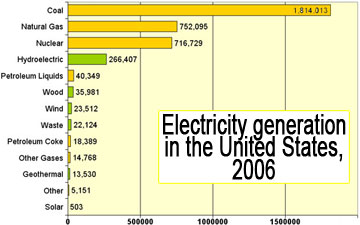Plug-in cars could help fuel Austin power grid
Plug-in cars could help fuel Austin power grid
mongabay.com
March 26, 2007
The city of Austin, Texas hopes to launch an ambitious plan using plug-in electric cars to reduce pollution and improve power grid management, reports an article in today’s Wall Street Journal.
Under the initiative put forth by Roger Duncan, deputy manager of Austin Energy, the city-owned electric utility, and backed by mayor Will Wynn, the plug-in electric cars would serve as sort of giant battery from which the city grid could draw power during peak demand.
“Roger Duncan, deputy manager of Austin Energy, the city-owned electric utility, dreamed up the scheme three years ago after the mayor ordered him to get more electricity from “green” sources, especially from wind,” writes John J. Fialka. “Austin Energy already got 6% of its power from wind, but wind production peaked at night, when electricity demand was low. Mr. Duncan needed more clean power during hot days, when demand was high.”
“If there were enough plug-ins around Austin, Mr. Duncan figured, he could buy more wind-generated electricity, sell it to plug-in owners at night, then buy some of it back during the day from cars sitting in parking lots equipped with special sockets.”
 Chart showing total energy production in the United States for 2006. Renewable energy sources are in green. Figures from the Department of Energy’s (DOE) Energy Information Administration (EIA). Chart created by Rhett A. Butler, mongabay.com. |
Fialka reports that San Francisco is also looking at a similar idea involving commuter cars parked at its Bay Area Rapid Transit System, or BART, stations. Overall, mayors from 50 major cities have shown interest in the plug-in concept, says Fialka.
Austin is trying to spark interest in the plan by launching a public awareness campaign and offering rebates to local residents who buy the cars, which won’t come cheap — batteries alone for the vehicles presently cost $15,000 to $20,000. However, Wynn is counting on scaled-up production to significantly reduce this cost.
The payoff to Austin would be cleaner air and as much as $27 million more in annual electricity sales for Austin Energy, assuming several thousand plug-in customers. Plug-in owners could expect to get about 100 miles of travel out of the cost of a gallon of gasoline.
CITATION: “In Quest for Cleaner Energy, Texas City Touts Plug-In Car” by John J. Fialka. The Wall Street Journal March 26, 2007.